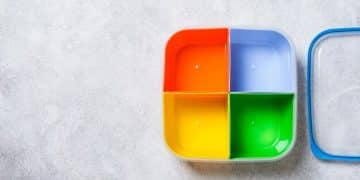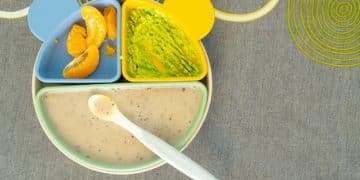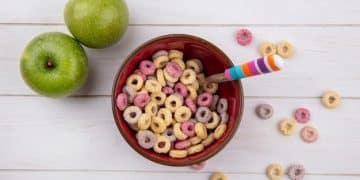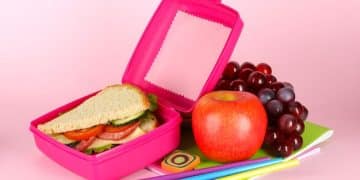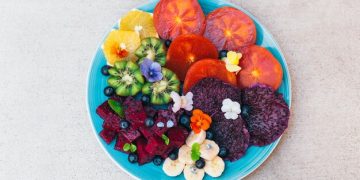Toddler Meal Planning: A Step-by-Step Guide for Busy Parents
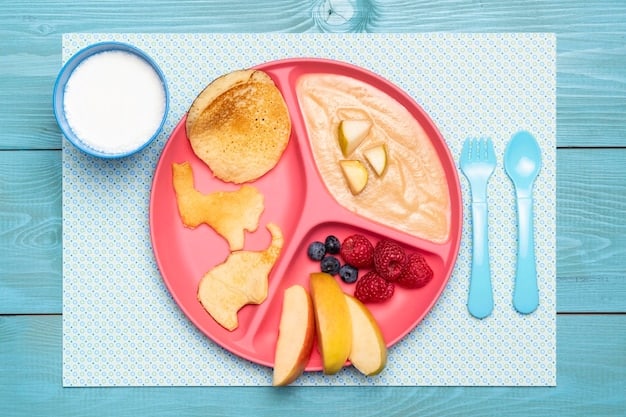
Toddler meal planning involves creating nutritious, balanced, and age-appropriate meals and snacks for children aged 1-3, ensuring they receive essential nutrients for growth and development amidst the challenges of picky eating and busy schedules.
Juggling work, family, and everything in between can make meal times with toddlers a real challenge. But don’t worry, effective toddler meal planning doesn’t have to be complicated.
Why is Toddler Meal Planning Important?
Toddlerhood is a crucial time for growth and development. What your child eats now can set the stage for lifelong healthy habits. But it can also be a frustrating time with burgeoning independence and ever-changing taste preferences.
Proper toddler meal planning ensures your little one gets the nutrients they need, supports their growth, and helps establish healthy eating patterns from an early age. It can also make your life easier! Let’s explore the benefits further.
Nutritional Needs of Toddlers
Toddlers need a balanced diet rich in vitamins, minerals, and macronutrients to support their rapid growth and development. Key nutrients include iron, calcium, vitamin D, and fiber.
Preventing Picky Eating Habits
Introducing a variety of foods early on through carefully planned meals can help prevent picky eating habits later in life. Exposure to different flavors and textures can make toddlers more open to trying new things.
- Offer a variety of colors and textures.
- Involve your toddler in meal preparation (age-appropriately, of course!).
- Don’t pressure them to eat; focus on making mealtimes positive.
Effective toddler meal planning addresses not only what to feed your child but *how* to feed them in a way that fosters a positive relationship with food.
Step-by-Step Guide to Toddler Meal Planning
Ready to start planning? This step-by-step guide will help you create a meal plan that works for your family and meets your toddler’s nutritional needs. Let’s dive in!
Toddler meal planning can seem daunting, but breaking it down into smaller, manageable steps makes the process much easier and less overwhelming.
Assess Your Toddler’s Needs
Consider your toddler’s age, activity level, and any dietary restrictions or allergies. This will help you determine their specific nutritional needs and plan accordingly.
Create a Weekly Meal Plan
Start by brainstorming meal ideas for breakfast, lunch, dinner, and snacks. Use a meal planning template or app to organize your ideas and create a weekly schedule. Don’t be afraid to repeat meals!

- Include a variety of food groups in each meal.
- Plan for leftovers to save time and reduce food waste.
- Be flexible; it’s okay to adjust the plan as needed.
This weekly overview is at the heart of effective toddler meal planning. It also provides a structure for your food shopping.
Toddler Meal Planning: Sample Meal Ideas
Need some inspiration? Here are some sample meal ideas to get you started. These are easily customizable based on your toddler’s preferences and dietary needs.
These sample meals provide a balanced mix of nutrients for your child’s growth and energy needs. Remember, presentation and variety are key in toddler meal planning!
Breakfast Ideas
Start the day with a nutritious breakfast that will keep your toddler energized until lunchtime. Options include:
- Oatmeal with berries and nuts (if no allergies).
- Whole-wheat toast with avocado and a sliced hard-boiled egg.
- Yogurt parfait with granola and fruit.
Lunch and Dinner Ideas
Lunch and dinner should include a balance of protein, carbohydrates, and vegetables. Consider these options:
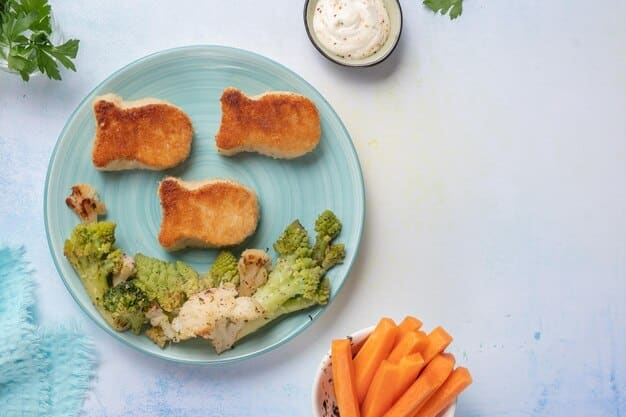
- Chicken or fish nuggets with steamed vegetables and sweet potato fries.
- Pasta with a tomato-based sauce and meatballs (turkey or beef).
- Quesadillas with black beans, cheese, and salsa.
Adapting these ideas to your toddler’s taste preferences through creative toddler meal planning can help encourage them to explore different food options.
Dealing with Picky Eaters
Picky eating is a common challenge with toddlers. Here are some strategies to help you navigate this phase and encourage your child to try new foods.
It’s important to remember that every child is different, and what works for one may not work for another. The key is patience and persistence when it comes to toddler meal planning and picky eating.
Tips for Introducing New Foods
Introducing new foods can be tricky. Here are some tips to increase the chances of your toddler accepting new flavors and textures:
- Offer new foods alongside familiar favorites.
- Serve small portions of the new food.
- Don’t pressure your toddler to eat; encourage them to try a bite.
Creative Ways to Sneak in Vegetables
If your toddler is resistant to vegetables, try incorporating them into meals in creative ways. You could:
- Add pureed vegetables to sauces or smoothies.
- Make vegetable-based muffins or fritters.
- Offer vegetables with a healthy dip, like hummus or yogurt.
Ingenious toddler meal planning can transform what appears on the menu and make for new and interesting meals.
Healthy Snack Ideas for Toddlers
Snacks play an important role in a toddler’s diet. They provide extra energy and nutrients between meals. Here are some healthy snack ideas:
Snacks can be a great opportunity to introduce new fruits and vegetables or to offer a small portion of a meal your toddler didn’t finish earlier. Smart toddler meal planning considers snacks an essential part of the daily nutritional intake.
Fruit and Vegetable Snacks
Offer a variety of fruits and vegetables as snacks. Cut them into fun shapes or serve them with a healthy dip.
Protein-Rich Snacks
Protein-rich snacks can help keep your toddler feeling full and satisfied. Good options include:
- Hard-boiled eggs
- Cheese sticks
- Yogurt
You’ll see how versatile toddler meal planning is when you give healthy snacks a try.
Toddler Meal Planning: Overcoming Common Challenges
Meal planning with toddlers isn’t always smooth sailing. Here are some common challenges and strategies for overcoming them.
Toddler meal planning is not a linear process. Expect hurdles along the way. Remember that consistency and a positive attitude are key to overcoming challenges.
Time Constraints
Many parents struggle with finding the time to plan and prepare meals. Consider these strategies:
- Batch cooking on weekends.
- Using pre-cut vegetables and fruits.
- Preparing simple, one-pot meals.
Budget Considerations
Eating healthy doesn’t have to break the bank. Here are some tips for saving money on groceries:
- Buy seasonal fruits and vegetables.
- Plan meals around what’s on sale.
- Cook from scratch instead of buying pre-packaged meals.
With good toddler meal planning it becomes possible to deal with budget concerns and time constraints while ensuring your child consumes healthy, nutritious meals.
| Key Point | Brief Description |
|---|---|
| 🍎 Nutritional Needs | Ensure balanced diet rich in vitamins, minerals, and macronutrients. |
| 🥕 Weekly Meal Plan | Brainstorm meal ideas and schedule weekly meals with variety. |
| 🥦 Snack Options | Incorporate fruits, vegetables, and protein-rich choices. |
| ⏰ Time Management | Employ batch cooking and pre-cut ingredients to save time. |
FAQ
▼
▼
▼
▼
▼
Conclusion
Toddler meal planning doesn’t have to be stressful. By following these tips and strategies, you can create healthy, balanced meals that your toddler will enjoy, all while simplifying your busy life. Remember to be patient, flexible, and have fun in the kitchen!
